
Last Updated on
By Tony Martins
Although your first international hunting adventure may not be a life-changing experience like some, it will no doubt be a memorable one. Once you have decided on a destination, doing some homework by researching the particulars will help to insure that those memories made will be good ones, with a successful and trouble-free experience. If you do not have a passport, be sure to apply for one well in advance of your trip. Seasoned travelers should make sure their passports have not expired and check that there are plenty of blank pages (six minimum), as this is a requirement to enter some countries. The most popular international hunting destinations for U.S. residents are Canada and Mexico, along with South Africa and Namibia, which are the top choices for an off-continent “safari.” Since any international hunting adventure is guaranteed to be more expensive than hunting on your cousin’s farm, budget restrictions often dictate the location and extent of the first such hunt. Here’s tip number 1: It’s wise to avoid “deals” and “bargain” packages for your first trip abroad – especially if other members of your family will be included – and beware of any verbal “guarantees.” After learning the ropes of hunting and traveling internationally, you will be in better position to evaluate tempting offers and avoid costly mistakes that can result in bitter disappointment.
OUTFITTER SELECTION
An outfitter will be required for virtually all international hunting. Many first-timers simply go with the recommendation of a friend, and this often affords a good outcome. A better way to select the outfitter who is right for you is to meet and speak with lots of them – and the best way to do this is to attend one of the international hunting conventions. The two biggest and arguably the best are held by the Dallas Safari Club in early January (Dallas, Texas) and Safari Club International, called the “Ultimate Hunters Market” in early February (Las Vegas, Nevada) each year. You will find hundreds of outfitters and representatives at these shows eager to discuss what they have to offer. Some will be promoting a “show special” (be careful!), which is typically a package that includes accommodations for a set number of days and specific animals. A downside to these deals is that some compromises will be made to offer the special rate – additional days and/or substituting one animal for another can be comparatively expensive, for example. One of your first major decisions will be whether to purchase a set package or design a custom hunt, and I have done both with excellent results. The key here is flexibility, as some outfitters are willing to accommodate out-of-the-ordinary requests at reasonable cost, and others are not. Here are a couple of examples:
It’s always a good idea to get references and actually speak with them. I did, and after speaking with several I purchased an inexpensive South Africa plains game package with NB Safaris. I met with owner Neil Barnard (referral info listed later) at the SCI convention to arrange final details. I was hoping to take the 4 springbok color variants (noted in part 1 “Adventures in Africa”), either as part of the package, or as add-ons. Barnard did not have all 4 color variants on his concession in the Limpopo Province, so he made arrangements with another outfitter for me to hunt these animals halfway across the country in the Northern Cape Province, near Kimberley! Despite some tricky logistics and the considerable additional travel that was required, the price was quite reasonable, and the hunt was a resounding success. Tip: It’s wise to ask the outfitter you choose if you will actually hunt with them, as many employ several different Professional Hunters or guides. If possible, also speak with the PH or guide who will actually be hunting with you.
Another great example of outfitter flexibility and accommodation was a custom bowhunt with Russell Lovemore at Safari Trails International in South Africa’s Eastern Cape Province. I hoped to take a couple of specific animals including zebra, walk-and-stalk (rather than sitting in ambush in a blind). A bowhunter himself, Lovemore knew this would be very difficult and could turn out to be unprofitable for him, but he readily accepted the challenge. We had a great hunt despite the fact that I failed to arrow a zebra in 5 days of trying for one of these wary and surprisingly elusive herd animals. And, when Russell saw signs of my frustration after the 3rd day, he made arrangements for us to break for a day and hunt bushbuck (my #3 animal) on a property 70 miles away. That hunt was a spectacular success, and although he made far less money hunting away from his own concession, his accommodation, professionalism and unselfishness did not go unnoticed by this appreciative hunter. We will hunt together again.
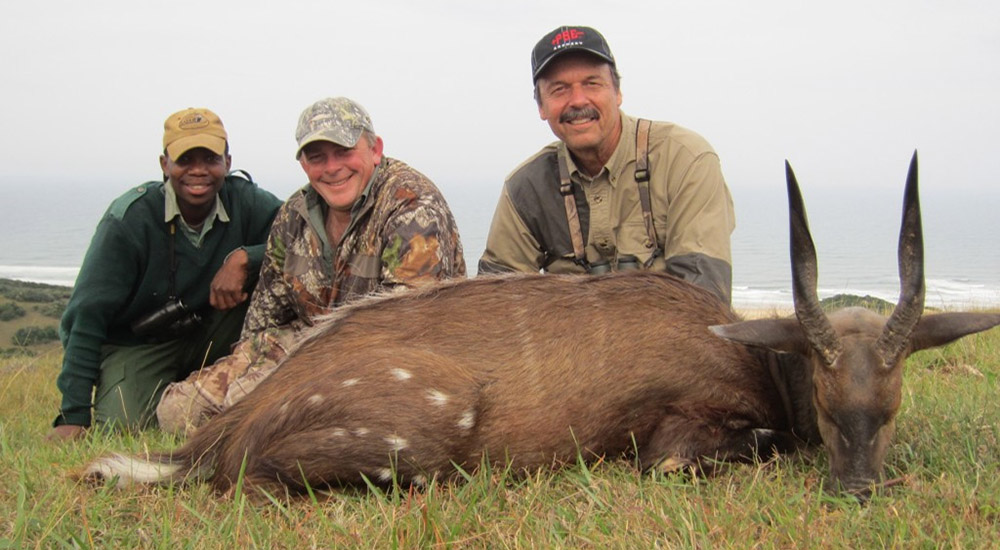
Another consideration is whether the outfitter can arrange touring and other activities that may be of interest in addition to the hunting, particularly in Africa. For example, a tour through world famous Kruger National Park is a popular safari add-on in South Africa. Some offer side fishing trips, and activities like scuba diving, sightseeing by bush cruiser or hot air balloon, and even touring by ultra-light aircraft. Friends recently returned from their first African safari, where they spent the first few days touring Cape Town and the wine country to the north before hunting the Great Karoo with Russ Lovemore. All arrangements for the seamless adventure were made by Safari Trails International, and my friends are already planning a return trip.
A deposit in U.S. currency is typically required to book hunting and other international excursions. Some African, Canadian and Mexican outfitters maintain U.S. bank accounts to facilitate payment. Completing a wire transfer from your bank to an account outside the U.S. is not difficult however, and your outfitter will provide the routing and account numbers if necessary. For hunts in Mexico, the deposit will often include the fee for a gun permit (about $250.00), which most outfitters will obtain for you through local authorities in the area you will be hunting. Gun permits in Canada are typically purchased on arrival at the Port-of-Entry, with a nominal fee – $25.00 in Alberta, for example. Note: You will also need to apply for a Wildlife Identification Number (WIN) before hunting in Alberta, but it costs less than $10.00 and is good for 5 years. There is no charge for a temporary gun permit in South Africa. These are issued by the police (SAP) office at the airport on arrival, where you will claim your guns (and bows). Serial numbers are verified on entry to the country, and again on departure when your permit will be turned in. Important documentation for permitting include; properly completed application form, proof of ownership (U.S. Customs Form 4457) with serial numbers of guns (and bows), copy of your passport, letter of invitation from your outfitter, and printed travel itinerary.

TRAVEL with GUNS & AMMO (and BOWS)
With the current state of affairs in the world as well as in our own country, many people are afraid to travel with guns. Although I have made many smooth and uneventful trans-continental and international airline trips with firearms over the past 20 years, problems can occur. Most outfitters can arrange rental guns, and this may be a wise choice if you will be touring in addition to hunting, making multiple stops during your trip, or traveling with multiple connections and layovers. Missing a connecting flight – or making the flight but your luggage, gun case and/or bow case do not, which has happened to me – can cause you to lose a day or more of hunting. If you want to take your own firearms however, here’s what you need to know, including some personal tips.
At check-in, airline counter personnel will ask you to attest that your firearm(s) is unloaded, and place a card with that statement in the case. They will then escort you to TSA, where a “sniffer” machine will check for gunpowder/explosives residue around the outside of the case before accepting it as checked baggage. Tip: Clean your firearm thoroughly before casing it for your U.S. departure. This is not an issue when returning from hunting in Africa, Canada or Mexico, however. Ammo must be in a lockable case packed in your luggage and not with your firearm. Most airlines limit ammo by weight, to 10 or 11 pounds. Canadian and South African authorities occasionally match check ammo to the gun(s) you are toting, and non-matching ammo can be confiscated. A letter from your African outfitter explaining such discrepancy will usually suffice, particularly when you will be hunting dangerous game that requires a large caliber rifle (.375 minimum) that you may not own. Tip: Use TSA approved locks on your gun and ammo cases (as well as your luggage) to avoid broken locks (and cases), as TSA agents will open each and every gun and ammo case multiple times during your travels. If they cannot open your lock, they will cut it or break it.
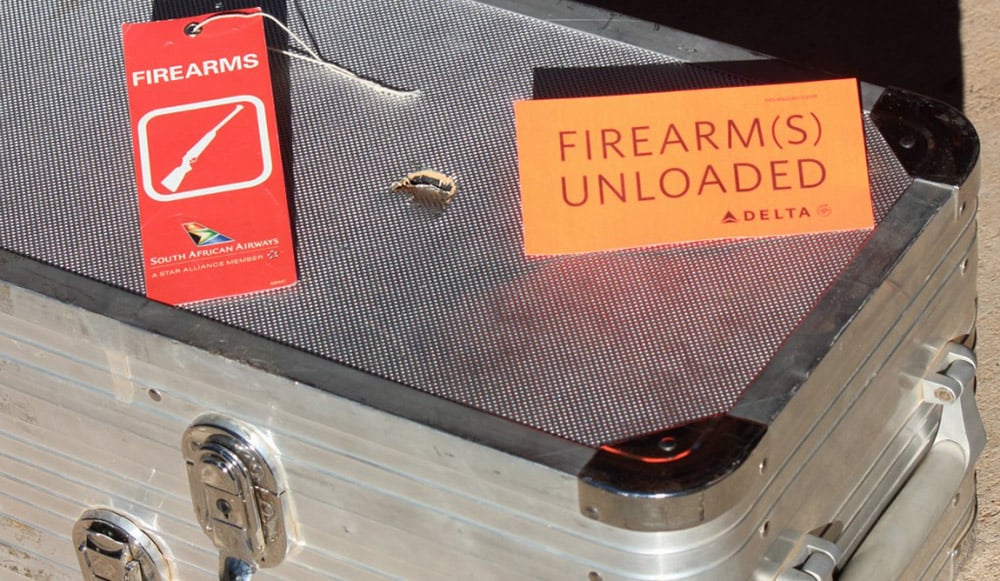
When flying with guns it’s also a good idea to avoid certain airports – particularly those where baggage handlers have apparently declared open season on gun cases, inflicting damage or re-routing them via the North Pole to insure delivery delays. The most notable offenders are reportedly employed at JFK and La Guardia airports in New York, and Heathrow in London. Tip: The Delta Airlines non-stop redeye flight from Atlanta to Johannesburg, RSA is my favorite. It leaves around 7 PM and arrives early evening the next day. Take a comfortable mask, ear plugs and a neck support and sleep on the plane so you will arrive refreshed, and avoid losing a day to jet lag.
WHAT’S INCLUDED & WHAT’S NOT INCLUDED
Ground transportation, both to and from the airport (or another designated location), and to and from the hunt area, camp or lodge is typically provided. Canadian fly-in only camps are an exception, where extra fees are typically charged for the bush plane flight(s). If driving to hunt in Mexico (particularly in Sonora), outfitter representatives will often meet hunters at the border to facilitate permitting. Most outfitters charge a daily rate for international hunting, individually or as part of a package. This typically includes food, lodging, guide, tracker(s), skinner(s) and ground transportation during the hunt. A package hunt may include the trophy fee for the animals hunted, particularly in Canada and Mexico, where the fee is usually paid even if the target animal(s) is not taken. Most outfitters in southern Africa use a pay-as-you-go system for plains game harvested (or wounded and not recovered), with a designated trophy fee for each animal. These fees will include skinning and salting of capes or hides. Dangerous game requires special permitting, and a fee for the hunt is typically paid even if no animals are taken.
Tips (for your guide/PH, tracker(s), skinner(s) and camp staff), taxidermy services (including, documentation fees, crating and shipping), and of course the cost of any extra touring or activities in addition to the hunting, are not typically included. Tipping policy varies widely, so it’s best to inquire up front. Some outfitters do not want their staff to be tipped directly – instead they prefer to collect all tips for later distribution – and in some camps the staff will quietly solicit tips from you individually. Some African outfitters express concern about over-tipping, while others expect you to tip with gusto! At the end of a 3-1/2 day hunt at one camp, my wife and I were handed a listing of “suggested” tips for the staff by the owner that totaled $1400.00… Seriously! Though nicely itemized and personalized, it nevertheless equaled the $400.00 daily rate for our stay. Obviously this was a bit over-the-top, and represents a gross exception to the general rule.
An important consideration for any international hunt is how your “trophies” will be handled after the hunt. International hunting is almost exclusively for trophies rather than meat, due to logistics and import restrictions. The two basic taxidermy options are having the work done at home, or abroad. If you want your favorite local taxidermist to mount your trophies, the horns, capes and back skins and/or full hides must first be prepared in-country for shipment to the U.S. In Africa, this process is called “Dip and Pack.” The skulls of horned and tusked animals will be boiled out, cleaned and chemically treated. They are typically suitable for display as European mounts as delivered – but be sure to wash thoroughly to remove chemical residue. Capes and hides are also treated to remove parasitic vermin, and thoroughly dried before packaging. The cost of this service varies by species but averages about $100.00 per animal, including permits and export documentation. Hides imported from Canada and Mexico must undergo similar treatment, but only the cleaned and treated skull caps (rather than intact skulls) of antlered animals can be imported.
Prices for finished taxidermy mounts are typically lower in Africa and Mexico than in the U.S. but higher in most parts of Canada. Savings will often offset the higher cost for crating and shipment of finished African mounts compared to horns and hides. Some believe the quality of lower cost taxidermy completed outside the U.S. (particularly in Africa) to be inferior, but this belief is largely unfounded. A more valid issue is one of communications while the work is in progress hundreds or thousands of miles away – a lack of which can lead to concern over whether the finished mount(s) will meet expectations. African outfitters usually work with a favored Dip & Pack business, and most outfitters can recommend a good taxidermist (referral info listed later). Tip: If you have the opportunity while abroad to visit the taxidermy studio that will prepare your trophies, you absolutely should do so. Caution: The cost of transporting trophies – from outfitter to taxidermist or Dip and Pack facility to exporter – may or may not be included in prices quoted, so inquire in advance.
“HIDDEN” COSTS
Despite valiant efforts to identify all the costs of hunting internationally, it seems that there are always some surprises. Probably the biggest of such surprises are all the fees associated with exporting and importing trophies. Most hunters expect to pay shipping costs, but few realize the largess of the additional costs that will be charged to complete the process. For example, the export manifest below shows airfreight charges of $247.00 for 9 animals (heads, capes & back skins), but the total bill is nearly $900.00! Insurance for the shipment was more than the actual shipping charges, and the bill is padded with surcharges as well as documentation, “facility” and “departure” fees. On the import side, the bill totaled more than $600.00, including various “handling” fees and customs duty. Together, these costs averaged about $165.00 per animal (all plains game).

Value Added Taxes are another cost to be considered. South Africa assesses 14% VAT on top of the daily rates charged for food/lodging, but this is usually included (and thus hidden) in the trophy fees quoted. Canadian provinces apply similar a Goods and Services Tax (GST) of 2.5% to 5%.
REPRESENTATIVE HUNTS / SAFARIS
Here are a few of the most common international hunts/safaris with representative costs for each. Costs listed include daily rate (food, lodging, guide & local transportation) and trophy fee(s) for animal(s) listed. Cost of travel from home to hunt location, trophy preparation/taxidermy, shipping and tips not included.
South Africa / Namibia – 6 to 7 days hunting for 5 of the 30+ plains game species (for example; gemsbok, wildebeest, impala, blesbok & warthog) = $5500 to $7000
South Africa / Mozambique – 5 to 10 days hunting for cape buffalo = $7500 to $10,000
Western Canada (Alberta, Saskatchewan, British Columbia) – 6 to 9 days hunting for whitetail = $4000 to $7000 – 6 to 9 days hunting for moose = $4500 to $6500 – 7 to 10 days hunting for mule deer = $7500 to $10,500 – 5 to 7 days hunting for 1 black bear = $3000 to $3500 with additional bear available for $500 to $1000 – 6 days hunting for wood bison and wolf = $10,000
Eastern Canada (Manitoba, Quebec) – 5 to 6 days hunting for 1 black bear = $3500 to $4000 – 6 to 7 days hunting for moose = $6500 to $11,000 – 7 days hunting for 2 barren ground caribou = $7500 to $10,500
Mexico (Sonora, Chihuahua) – 5 to 7 days hunting for Coues whitetail deer = $4000 to $6000 – 6 to 7 days hunting for mule deer = $8,000 to $13,500 – 10 to 14 days hunting for desert bighorn sheep = $50,000 to $55,000
WHERE TO START / OUTFITTERS
For most hunters, their first international hunt will be a big deal. For many, it will be the hunt of a lifetime, so planning to avoid potentially costly mistakes is important. As noted earlier, the best way to get started is to speak with friends who have taken international hunts, and the actual outfitters (not agents) who provide them. Following is a listing of outfitters that I can personally recommend, with confidence that they can help you arrange a wonderful international hunting/touring adventure and lifetime experience.
South Africa & Mozambique – plains game, dangerous game, fishing & touring.
Russell Lovemore, Safari Trails International – website: www.safari-international.com, email: [email protected], telephone: +27 83 303 7600
South Africa, Zimbabwe & Mozambique – plains game, dangerous game, predators & fishing.
Johan & Rick Wolvaardt, Sand River Safaris – website: www.sandriversafaris.co.za, email: [email protected], telephone: +27 11 869 1530
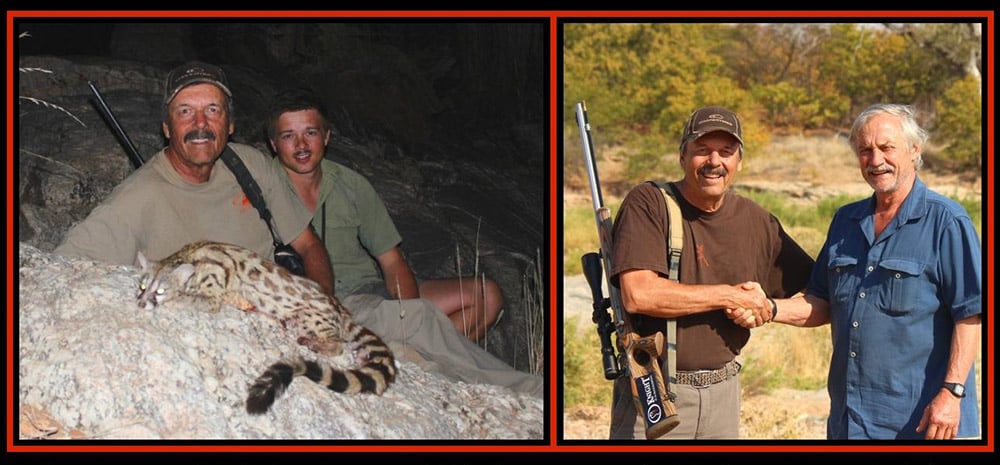
South Africa & Mozambique – plains game, dangerous game, fishing & touring.
Neil Barnard, NB Safaris – website: www.nbsafaris.co.za, email: [email protected],
telephone: +27 83 391 1646
South Africa, Mozambique & Zimbabwe – plains game, dangerous game & touring.
Ricus de Villiers, White Lion Safaris – www.whitelionsafaris.com, email: [email protected], telephone: +27 83 236 3293
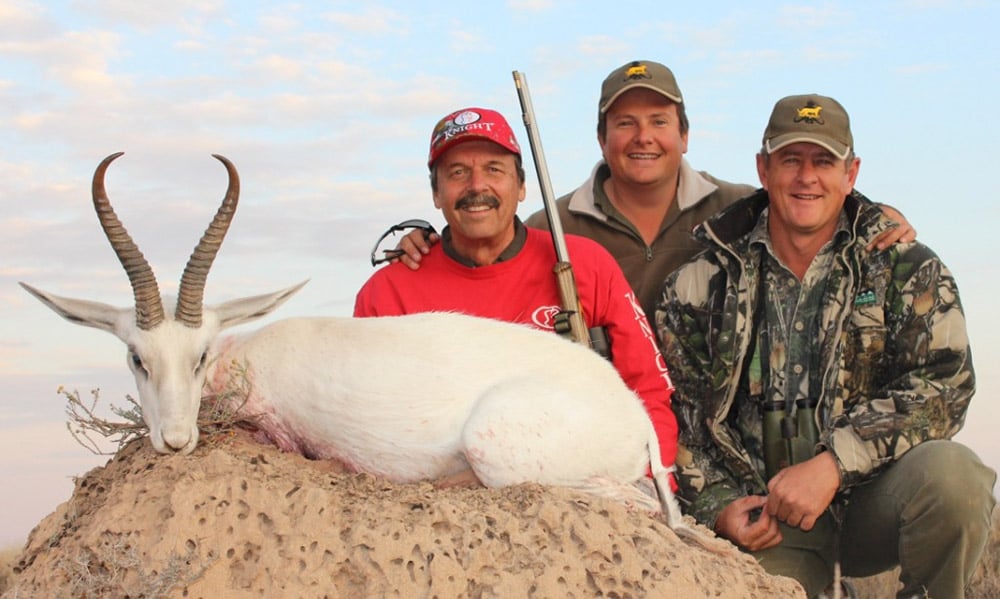
Canada (Alberta) – waterfowl, wood bison, moose, whitetail & mule deer, wolf & coyotes, muskox & fishing. Kevin McNeil, Blue Sky Outfitters – www.blueskyoutfitting.com & www.aylmerlakelodge.com, email: [email protected], telephone: 780-536-7290
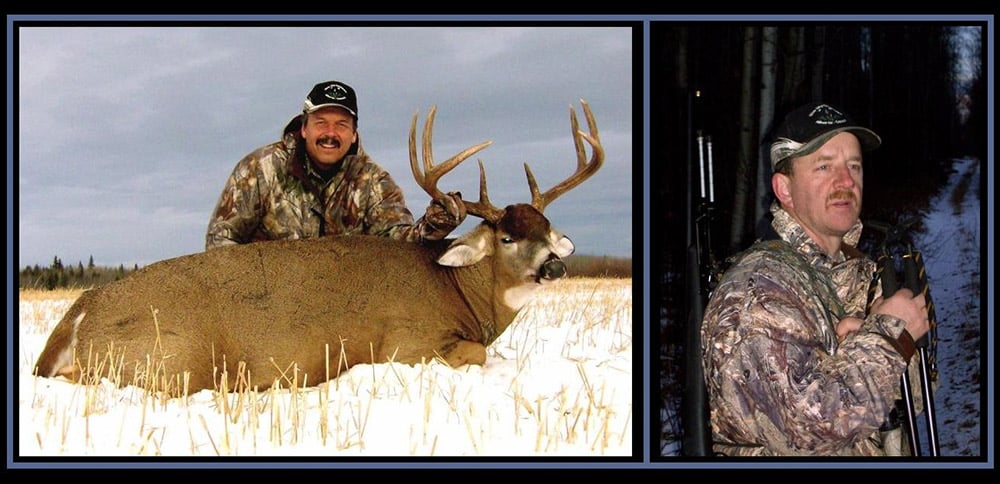
Mexico (Sonora) – mule deer, Coues deer, desert bighorn sheep, mountain lion & javelina.
Nayo Balderrama, Amigo’s Guides & Outfitters – www.amigosguides.net, email: [email protected], telephone: 011-521-662-256-2166, or call Dave May, U.S. telephone: 520-205-2727
WHERE TO FINISH / TAXIDERMISTS
South Africa – Safari Taxidermy (Polokwane, Limpopo). N.W. and Riana Ligthelm – www.safaritaxidermy.co.za, email: [email protected], telephone: +27 15 293 2674
South Africa – Red Dune Taxidermy & Wildlife Studio (Jacobsdal, Northern Cape). Hendrik Labuschagne – www.reddunetaxidermy.com, email: [email protected], telephone: +27 53 591 0000



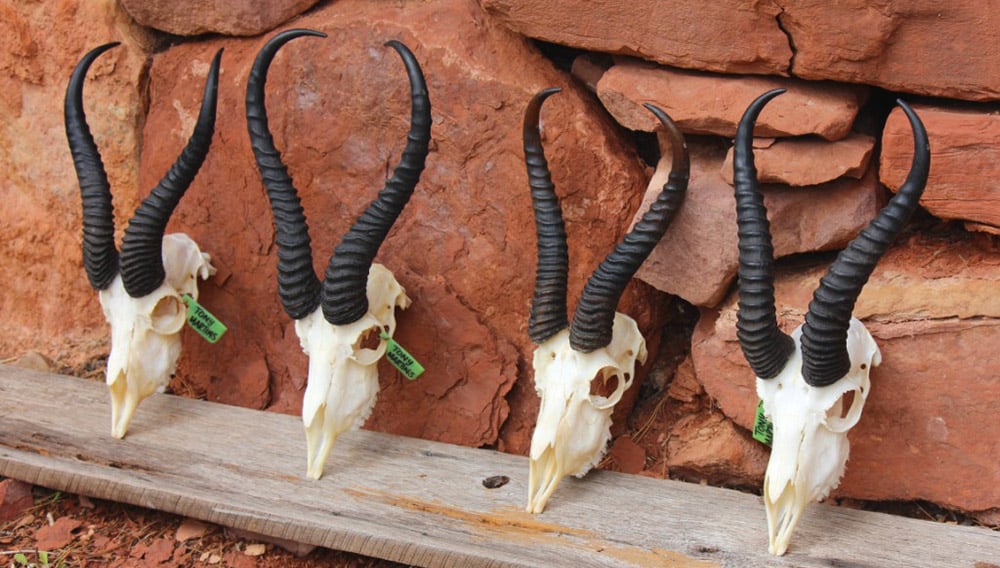





Leave a Reply